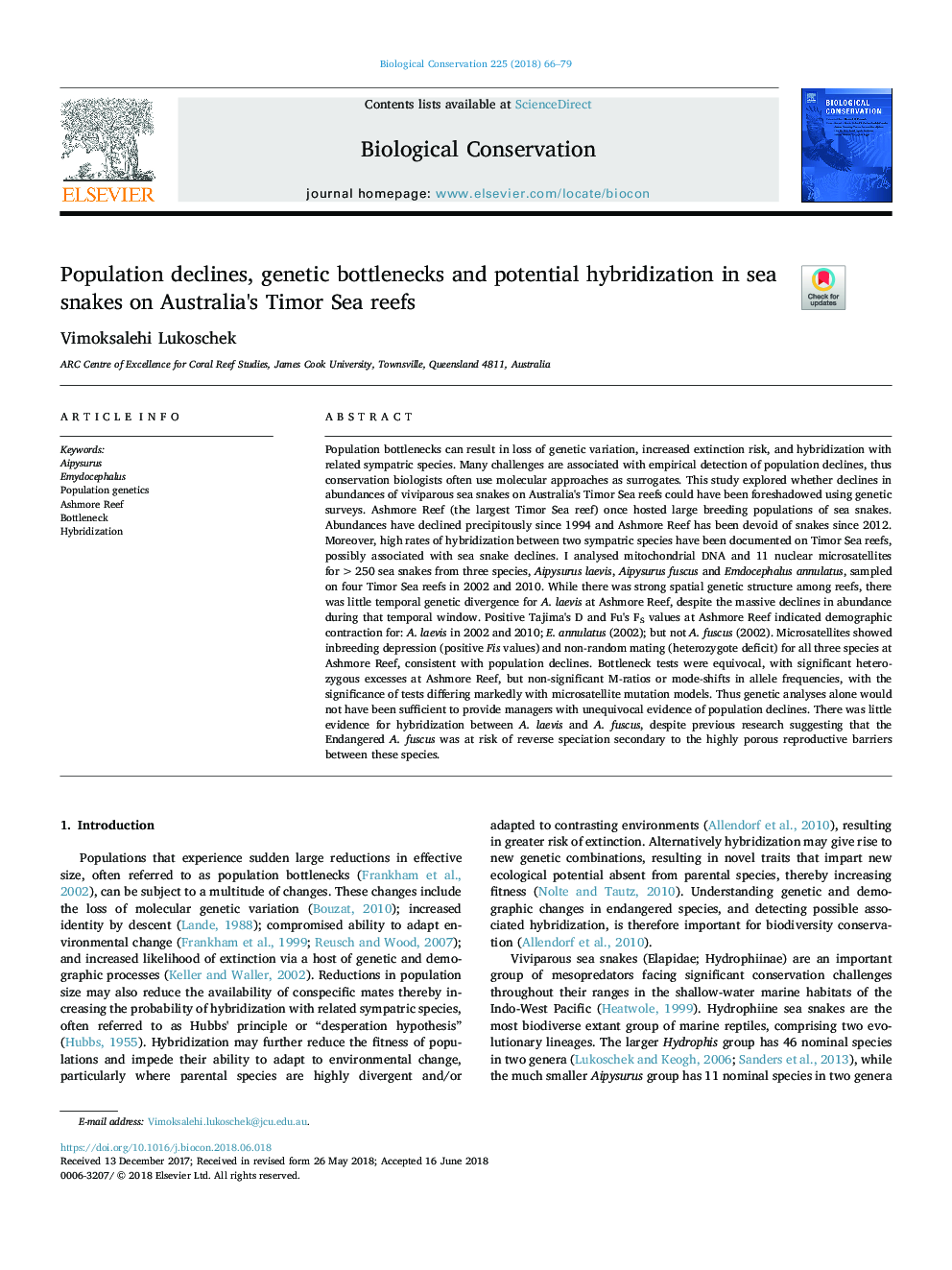| کد مقاله | کد نشریه | سال انتشار | مقاله انگلیسی | نسخه تمام متن |
|---|---|---|---|---|
| 8847135 | 1617880 | 2018 | 14 صفحه PDF | دانلود رایگان |
عنوان انگلیسی مقاله ISI
Population declines, genetic bottlenecks and potential hybridization in sea snakes on Australia's Timor Sea reefs
ترجمه فارسی عنوان
کاهش جمعیت، تنگناهای ژنتیکی و هیبریداسیون بالقوه در مارهای دریایی در صخره های دریای استرالیا است
دانلود مقاله + سفارش ترجمه
دانلود مقاله ISI انگلیسی
رایگان برای ایرانیان
موضوعات مرتبط
علوم زیستی و بیوفناوری
علوم کشاورزی و بیولوژیک
بوم شناسی، تکامل، رفتار و سامانه شناسی
چکیده انگلیسی
Population bottlenecks can result in loss of genetic variation, increased extinction risk, and hybridization with related sympatric species. Many challenges are associated with empirical detection of population declines, thus conservation biologists often use molecular approaches as surrogates. This study explored whether declines in abundances of viviparous sea snakes on Australia's Timor Sea reefs could have been foreshadowed using genetic surveys. Ashmore Reef (the largest Timor Sea reef) once hosted large breeding populations of sea snakes. Abundances have declined precipitously since 1994 and Ashmore Reef has been devoid of snakes since 2012. Moreover, high rates of hybridization between two sympatric species have been documented on Timor Sea reefs, possibly associated with sea snake declines. I analysed mitochondrial DNA and 11 nuclear microsatellites for >250 sea snakes from three species, Aipysurus laevis, Aipysurus fuscus and Emdocephalus annulatus, sampled on four Timor Sea reefs in 2002 and 2010. While there was strong spatial genetic structure among reefs, there was little temporal genetic divergence for A. laevis at Ashmore Reef, despite the massive declines in abundance during that temporal window. Positive Tajima's D and Fu's FS values at Ashmore Reef indicated demographic contraction for: A. laevis in 2002 and 2010; E. annulatus (2002); but not A. fuscus (2002). Microsatellites showed inbreeding depression (positive Fis values) and non-random mating (heterozygote deficit) for all three species at Ashmore Reef, consistent with population declines. Bottleneck tests were equivocal, with significant heterozygous excesses at Ashmore Reef, but non-significant M-ratios or mode-shifts in allele frequencies, with the significance of tests differing markedly with microsatellite mutation models. Thus genetic analyses alone would not have been sufficient to provide managers with unequivocal evidence of population declines. There was little evidence for hybridization between A. laevis and A. fuscus, despite previous research suggesting that the Endangered A. fuscus was at risk of reverse speciation secondary to the highly porous reproductive barriers between these species.
ناشر
Database: Elsevier - ScienceDirect (ساینس دایرکت)
Journal: Biological Conservation - Volume 225, September 2018, Pages 66-79
Journal: Biological Conservation - Volume 225, September 2018, Pages 66-79
نویسندگان
Vimoksalehi Lukoschek,
